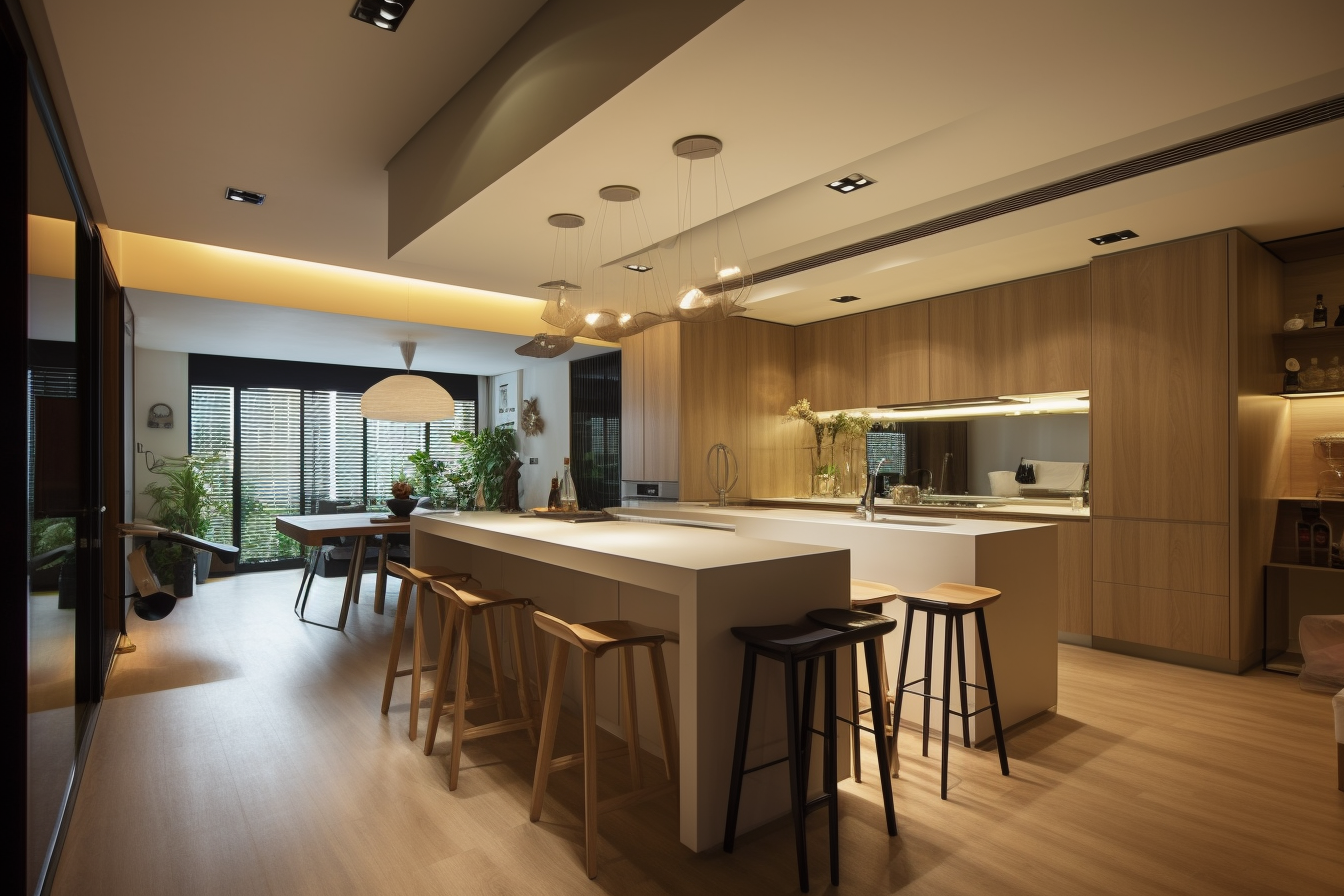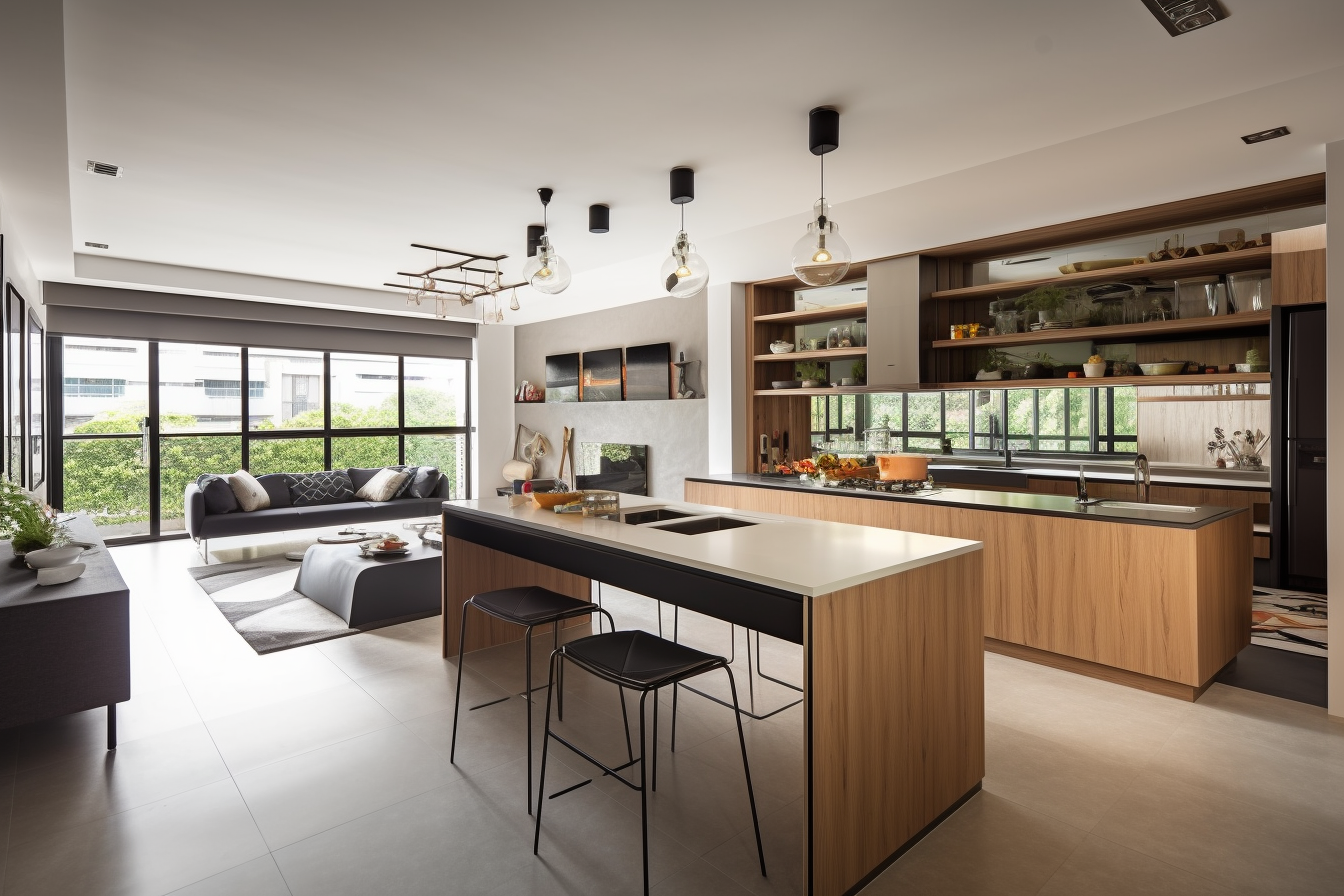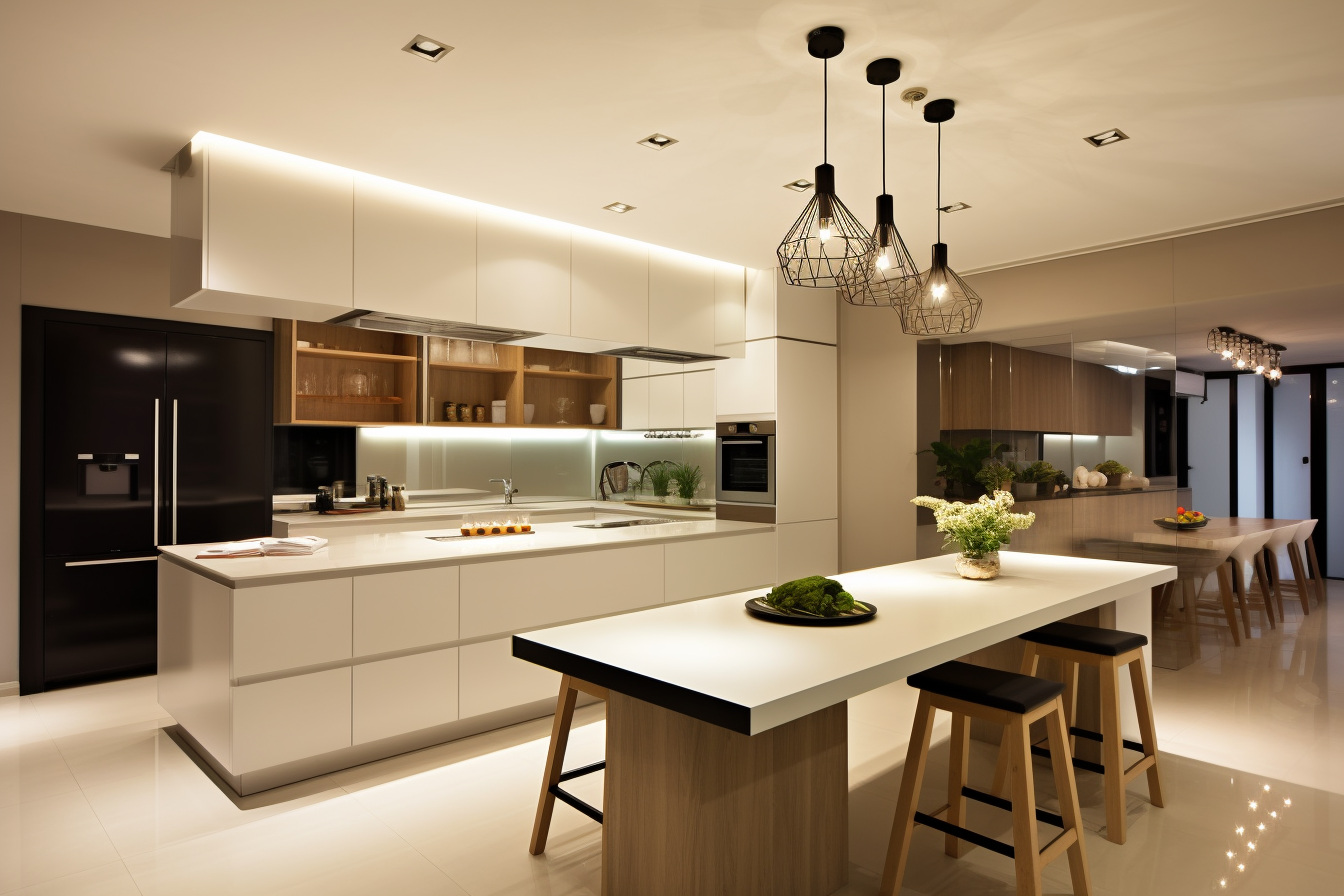An open-concept kitchen refers to a design layout in which the kitchen area is not enclosed by walls or partitions, but instead seamlessly integrates with adjoining living spaces. In this layout, there are minimal or no physical barriers separating the kitchen from the dining area, living room, or other communal spaces. This design concept aims to create a more open, spacious, and interconnected living environment where cooking, dining, and socializing can all take place in a cohesive setting.

Open-concept kitchens have gained significant popularity in Singaporean homes due to their modern and spacious design. Open-concept kitchens are becoming increasingly popular in Singapore, with over 50% of homeowners opting for this design in their recent renovations. However, like any design choice, there are both advantages and disadvantages associated with this layout. Here’s a look at the pros and cons of open-concept kitchens in the context of Singapore:
Advantages of Open-Concept Kitchens
- Enhanced Social Interaction: One of the primary benefits of an open-concept kitchen is that it fosters seamless interaction between family members and guests. In Singaporean culture, where communal dining is common, this layout allows for conversations to flow freely between the kitchen and the dining or living areas.
- Sense of Spaciousness: Open-concept kitchens create an illusion of larger space, which is particularly valuable in Singapore’s compact living environments. This design can make even small apartments feel more open and less confined.
- Improved Natural Light: With fewer walls to block light, open-concept kitchens often receive more natural light from adjoining areas, reducing the need for artificial lighting during the day.
- Entertainment-Friendly: Singaporeans love to host gatherings and entertain guests at home. An open kitchen layout allows hosts to interact with guests while preparing meals, contributing to a lively and engaging atmosphere.

Disadvantages of Open-Concept Kitchens
- Cooking Odors and Noise: One of the challenges of open-concept kitchens is that cooking aromas and noise can easily spread throughout the living area. In Singapore’s compact apartments, this can be a concern, especially when strong cooking odors linger.
- Privacy Concerns: Open kitchens may compromise privacy, as cooking activities are on display to guests or family members in the adjacent spaces. This could be uncomfortable for some individuals, particularly when hosting formal guests.
- Storage and Organization: Open kitchens might lack sufficient concealed storage space for kitchen utensils, appliances, and pantry items. Maintaining a neat and organized appearance becomes more critical as storage is more visible.
- Design Coordination: Achieving a cohesive design that seamlessly integrates the kitchen with the adjacent spaces can be challenging. Coordinating colors, materials, and styles is essential for a visually pleasing outcome.
- Heat and Humidity: Singapore’s tropical climate can lead to heat and humidity issues, and an open concept kitchen might exacerbate this. Cooking activities can generate additional heat and affect the comfort of adjoining spaces.

Open concept kitchens offer several advantages that align well with the communal and social aspects of Singaporean living. However, they also come with potential challenges related to privacy, odors, and design coordination. When considering an open concept kitchen, it’s crucial to weigh these pros and cons against your lifestyle, preferences, and the specific layout of your home.







